Why Traditional Clinics May Not Meet the Needs of Older Adults
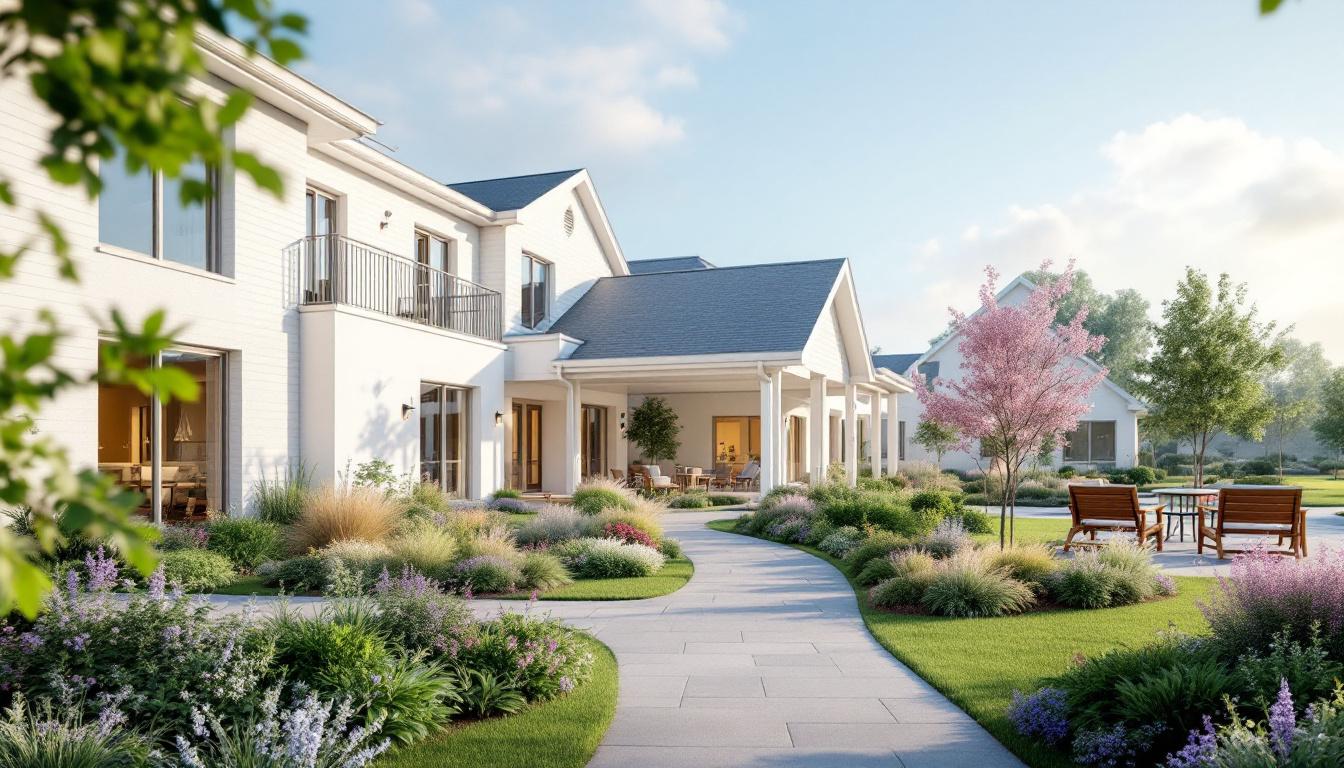
The Challenges Facing Conventional Healthcare for Older Adults
As the population ages rapidly worldwide, traditional healthcare models are increasingly failing to meet the comprehensive needs of older adults. These models, often centered on episodic and acute care, lack the flexibility, coordination, and person-centered focus necessary for managing complex physical, mental, and social health issues faced by seniors. This article explores why conventional clinics may fall short and discusses emerging strategies to create accessible, equitable, and holistic healthcare environments tailored for aging populations.
Limitations of Traditional Healthcare Models in Caring for Older Adults
What are the main challenges faced by traditional healthcare models in meeting the needs of older adults?
Traditional healthcare systems struggle to adequately serve older adults because they often focus predominantly on treating individual health issues rather than addressing the broader, more complex health and social needs of this population.
One significant challenge is the management of the multifaceted health conditions common among older adults, such as multiple chronic diseases, mental health issues, and functional impairments. These conditions require coordinated care across multiple providers, which many current systems are not designed to facilitate.
Another obstacle is the lack of effective integration among healthcare providers. Patients frequently see several specialists or healthcare professionals who may not communicate effectively with each other, leading to fragmented care, duplications, and gaps in treatment.
The shortage of healthcare professionals trained specifically in geriatrics compounds the problem. Many providers lack specialized knowledge in aging-related health issues, which impacts the quality of care delivered.
Systemic issues such as inadequate resources, limited use of comprehensive care models, and poor communication channels further hinder the ability to deliver holistic care. Additionally, most existing reimbursement models favor episodic or acute care, discouraging investment in preventive and long-term management strategies essential for maintaining older adults' health and well-being.
Fragmentation is also exacerbated by systemic barriers that prevent seamless integration of social services, mental health support, rehabilitation, and community resources into routine healthcare. As a result, older adults often experience disjointed care pathways that do not address their needs holistically.
Furthermore, healthcare systems tend to prioritize immediate medical problems over the social determinants of health—such as housing, transportation, and social support—that critically influence health outcomes in older populations.
The emphasis on procedures, hospitalizations, and short-term solutions in traditional models contrasts sharply with the comprehensive, person-centered approach needed for the elderly.
In summary, the main issues include inadequate attention to the complex health needs, poor provider coordination, insufficient geriatric expertise, systemic fragmentation, and reimbursement policies skewed toward acute care. These shortcomings highlight the urgent need for reforms that foster integrated, interdisciplinary, and patient-centered care models tailored specifically to the aging population.
Accessibility Issues and Their Impact on Elder Care
How do accessibility issues and disparities impact healthcare access for older adults?
Older adults often face multiple barriers that limit their access to healthcare services. These challenges are particularly evident in transportation, financial constraints, and the availability of age-appropriate healthcare options.
Transportation issues play a crucial role in hindering access, especially for seniors living in rural or underserved urban areas. Long distances to healthcare facilities, limited public transportation, and physical mobility limitations can prevent older adults from attending regular appointments or seeking prompt care.
Financial barriers, including high costs of medications, tests, and services, as well as inadequate insurance coverage, further restrict access. Many seniors find it difficult to afford necessary treatments, leading to postponed or skipped care that can worsen health outcomes.
Inadequate age-specific healthcare services contribute to disparities. Older adults require tailored services that consider their unique physical, cognitive, and social needs. Yet, many healthcare facilities lack such specialized offerings, causing older patients to encounter obstacles in receiving effective care.
Geographic disparities are particularly prominent in rural regions, where healthcare provider shortages, facility closures, and limited infrastructure reduce access. These areas often lack specialist services and timely care, resulting in unmet health needs and higher hospitalization rates.
Health literacy and navigation challenges further complicate access for older adults. Difficulties understanding medical information, managing complex care plans, and using digital health tools can hinder effective engagement with healthcare systems. Limited familiarity with technology, especially among the oldest seniors, exacerbates these issues.
Cultural and social barriers, such as language differences and stigma, also impact utilization. Older adults from minority or immigrant backgrounds might experience language barriers or distrust towards healthcare providers, reducing their likelihood of seeking needed care.
These multifaceted barriers collectively lead to unequal healthcare utilization. Marginalized groups, including those with lower income, racial minorities, and residents of remote areas, often experience longer hospital stays, higher readmission rates, and poorer health outcomes.
Addressing these disparities requires comprehensive interventions. Improving transportation networks, expanding telehealth services, increasing funding for community-based programs, and enhancing health literacy are vital steps.
Policies designed to bolster socioeconomic conditions, foster community support, and tailor healthcare delivery to older adults' needs are essential for promoting equitable access. Strengthening these areas can reduce health disparities and ensure all older adults receive the care they need for healthy aging.
Systemic and Structural Barriers in Healthcare Delivery
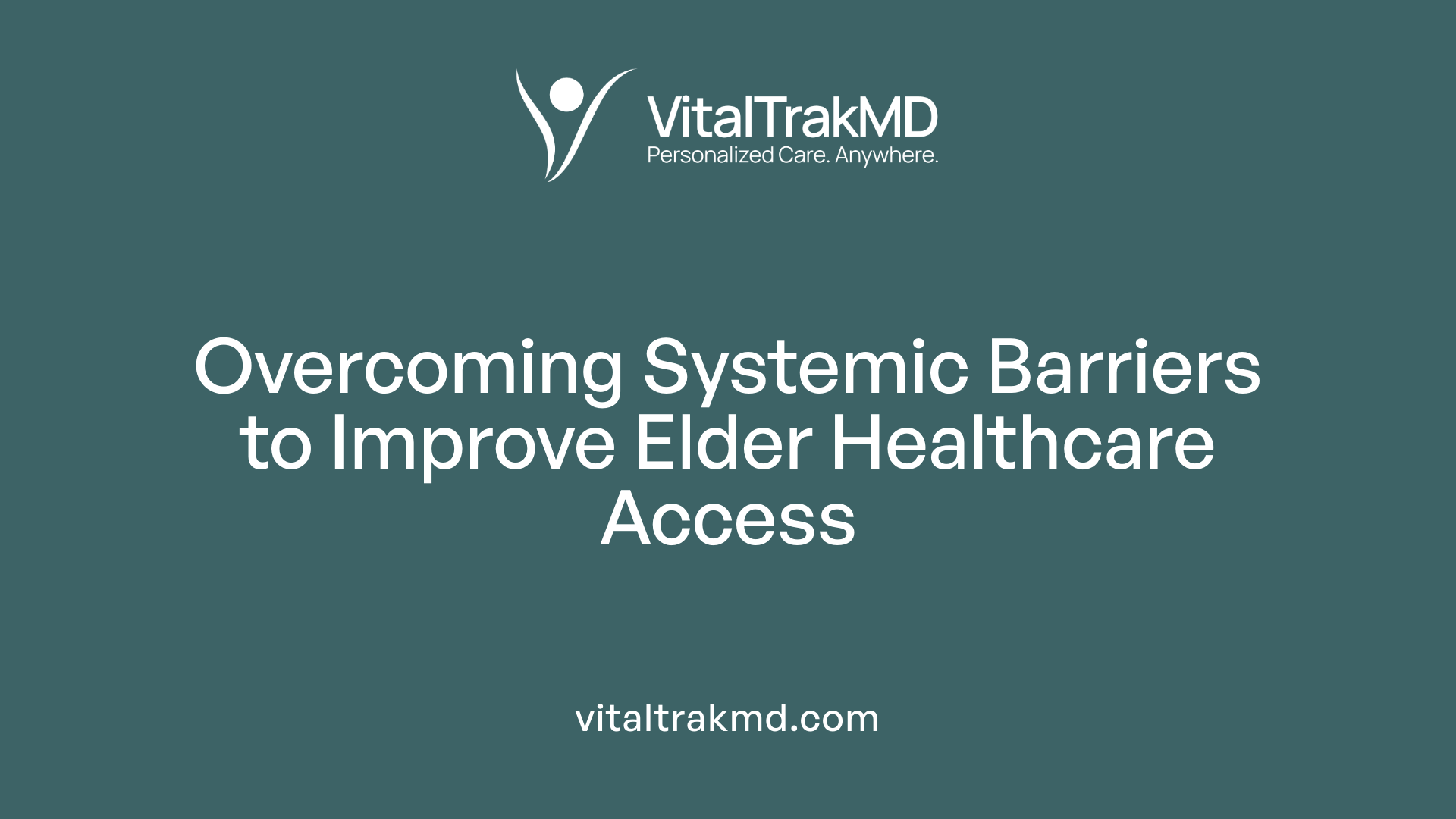
What systemic issues affect older adults' access to healthcare?
Older adults face numerous systemic barriers that limit their ability to access appropriate healthcare services. A primary challenge is the high cost of healthcare, with many older individuals experiencing substantial out-of-pocket expenses. For instance, over a quarter of older Americans spend at least $2,000 annually on health care, which can be prohibitive, especially for those on fixed incomes.
Limited insurance coverage further compounds these costs. Despite Medicare coverage, many seniors find that it provides inadequate benefits for essential services. Dental care, mental health support, and certain medications often remain expensive or inaccessible, leading to skipped treatments and unmanaged conditions.
Alongside financial hurdles, disparities in healthcare benefits exist across different demographics and regions. Rural residents, for example, encounter more pronounced difficulties due to fewer available providers, longer travel distances, and limited specialty care. These inequities mean that vulnerable populations are often left behind, with delayed diagnoses and poorer health outcomes.
The healthcare system’s fragmentation is another significant issue. Older adults typically see multiple physicians—often five or more annually—but lack coordinated care plans. This disjointed approach can result in duplicated tests, conflicting medications, and gaps in preventive services.
Workforce shortages, especially in areas such as geriatrics and rural regions, limit service availability. Many rural areas are designated as Primary Care Health Professional Shortage Areas (HPSAs), where the lack of qualified providers causes long wait times and reduced care quality.
Inefficient delivery models, including lengthy wait times for appointments and reliance on episodic care, undermine continuous health management. This is especially problematic for managing chronic diseases common among older populations.
Furthermore, health information technology (IT) adoption remains uneven. Inadequate integration of electronic health records, telehealth services, and digital tools limits access, particularly for individuals with low digital literacy or limited internet connectivity.
Despite policy initiatives like Medicare, these systemic issues persist. Many older adults find themselves unable to afford necessary treatments, experience care that is poorly coordinated, or face geographical and technological barriers.
Addressing these challenges requires multifaceted reforms focusing on reducing costs, expanding insurance benefits, enhancing care coordination, and investing in rural health infrastructure. Only through such comprehensive efforts can we improve equitable access to healthcare for the aging population.
Mental Health Barriers Among Older Adults
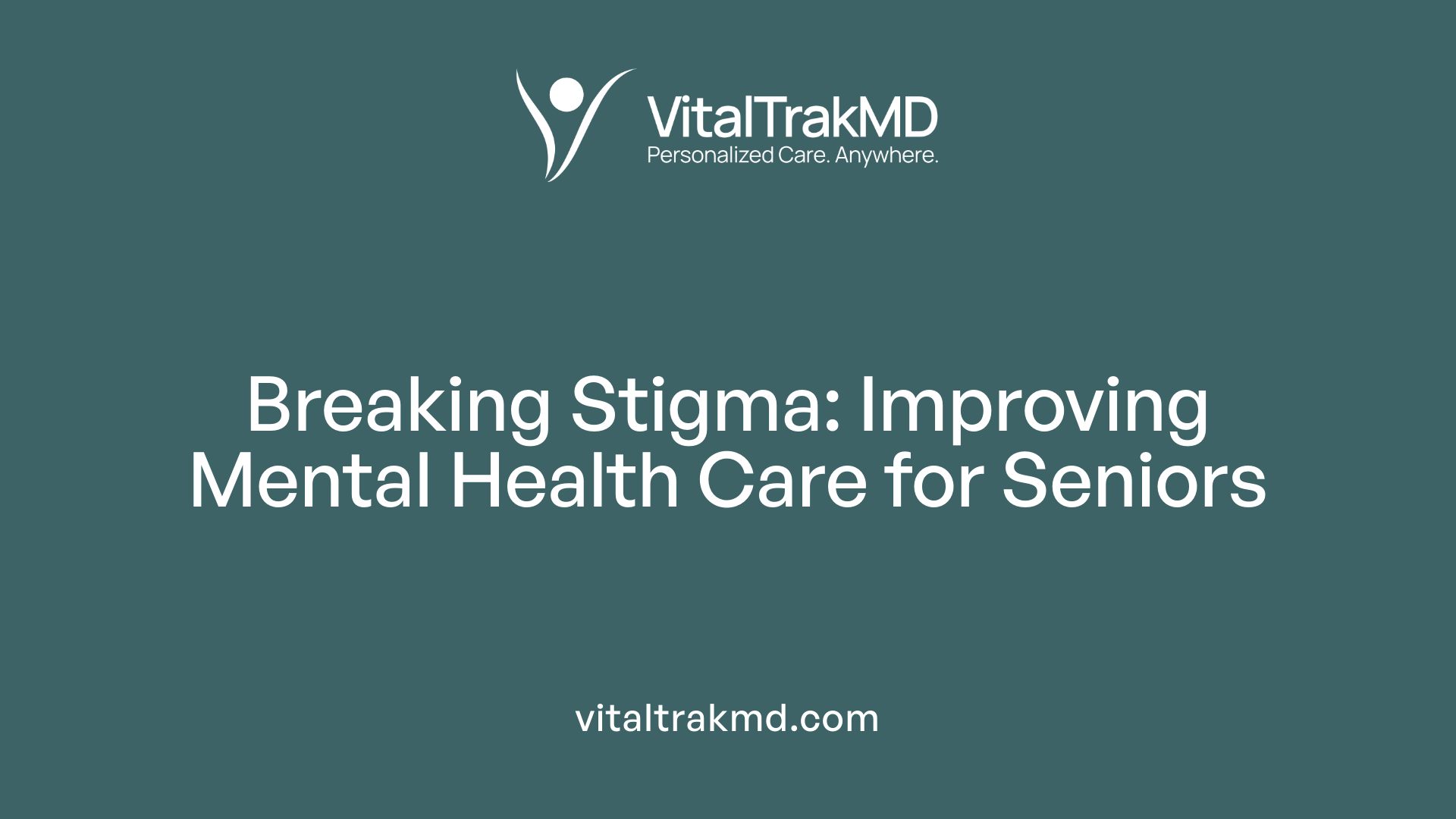
What barriers do older adults face in mental health care?
Older adults encounter a range of obstacles that limit their access to effective mental health services. One of the most pervasive issues is stigma and societal ageism. Many seniors internalize negative stereotypes, believing that mental health struggles are a normal part of aging or fearing judgment from others. This societal bias discourages help-seeking and often leads to untreated conditions.
Another significant barrier is the high cost of treatment alongside limited availability of mental health specialists. Many older adults find mental health services expensive, which is compounded by restrictions on prescribing medications and a shortage of qualified providers, especially in rural areas. Transportation and mobility issues further complicate access, making it difficult for seniors with physical limitations to attend appointments.
Cultural, racial, and educational differences also influence mental health care utilization. Minority populations and those with limited health literacy often face additional hurdles, such as language barriers, mistrust of healthcare systems, or unfamiliarity with available services. These disparities can result in lower rates of engagement and treatment.
Many older individuals prefer informal or family support networks over formal mental health services. While these supports are valuable, reliance solely on informal help can delay or prevent appropriate treatment for serious mental health issues.
A lack of integrated mental health services within primary care settings also hampers efforts to address mental health needs holistically. When mental health care is segregated from general healthcare, opportunities for early detection and intervention diminish.
Addressing these complex barriers requires multifaceted strategies. Efforts include reducing societal stigma through education campaigns, expanding affordable and accessible mental health services, enhancing transportation options, and ensuring culturally competent care. Promoting mental health literacy and integrating mental health screening into primary care are vital steps to improve access and outcomes for older adults across diverse backgrounds.
The Growing Need for Alternative and Complementary Approaches
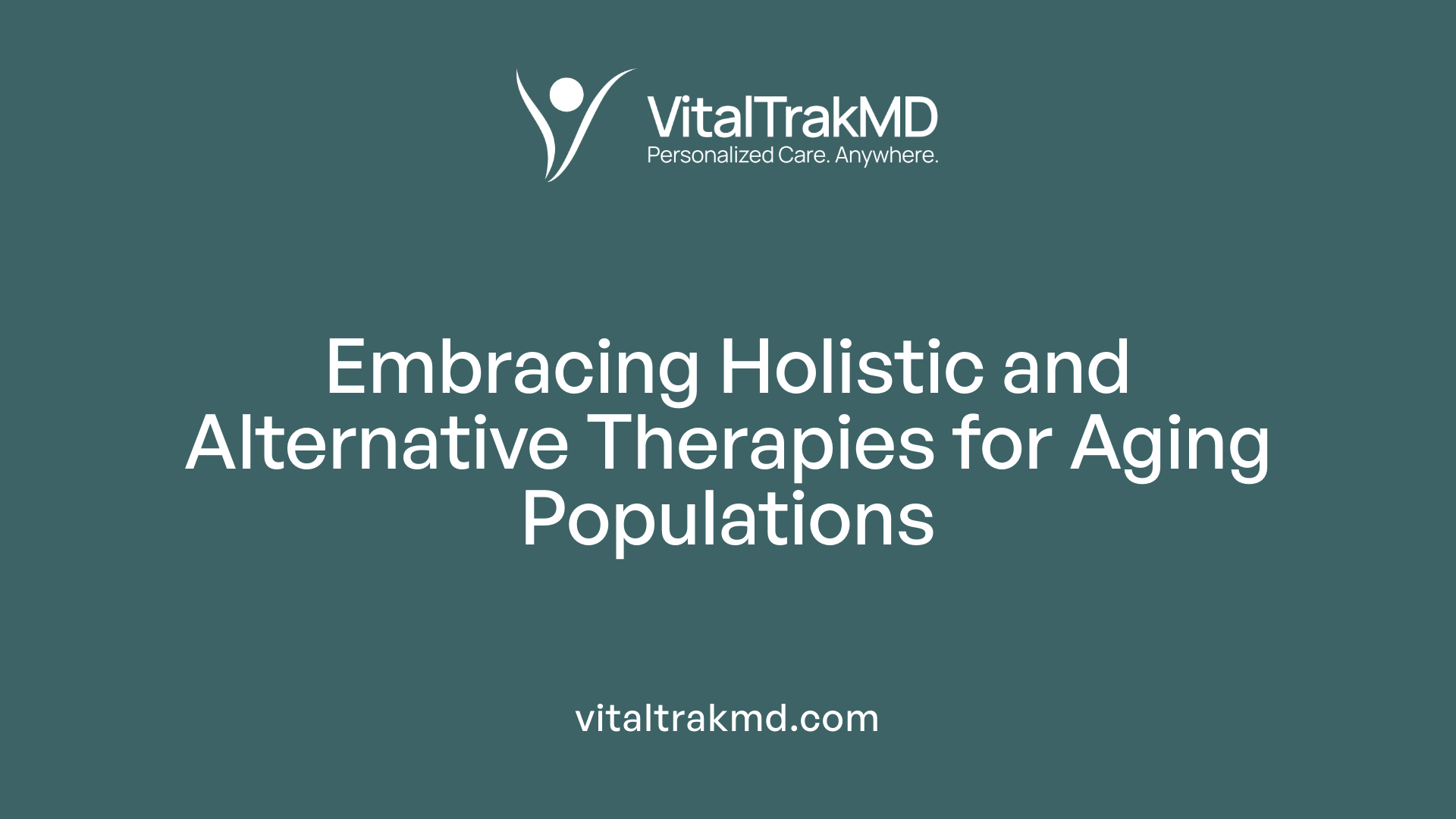
Why is there a need for alternative healthcare approaches for aging populations?
As the number of older adults continues to rise globally, traditional healthcare models face increasing challenges in meeting their diverse needs. Older adults often contend with multiple chronic conditions, cognitive decline, and mental health issues, which require comprehensive and personalized care. Conventional systems, focused primarily on acute and disease-specific treatments, can fall short in addressing these multifaceted health concerns.
This gap has led to a surge in the use of complementary and alternative medicine (CAM). Older individuals are increasingly turning to non-traditional therapies that emphasize holistic well-being, pain management, and mental health support. Evidence shows that CAM approaches can effectively manage chronic pain, improve cognitive function, and foster mental resilience.
In addition to diversifying treatment options, there is a push to support aging in place—allowing seniors to remain in their homes and communities for as long as possible. Strategies such as telehealth, home modifications, and community-based services facilitate accessible and respectful care, aligning with older adults' preferences for independence.
Integrating community and home-based services with conventional healthcare helps bridge gaps caused by workforce shortages, transportation difficulties, and geographic barriers—particularly in rural areas. These approaches not only improve health outcomes but also enhance quality of life and reduce healthcare costs.
Research continually demonstrates the effectiveness of CAM in managing various health issues pertinent to older adults. For instance, mind-body practices like meditation and Tai Chi improve balance and reduce fall risk, while herbal therapies can complement pharmacological treatments.
The shift towards holistic, person-centered care involves policy reforms, interdisciplinary training, and community engagement. Creating age-friendly environments through education, supportive infrastructure, and respectful communication fosters trust and encourages seniors to actively participate in their health.
Overall, innovative, tailored strategies that incorporate alternative healthcare approaches are vital in building equitable, effective, and compassionate care systems for the aging population, ensuring their health, dignity, and well-being are prioritized.
Cultural Competence and Its Role in Satisfaction and Care Quality
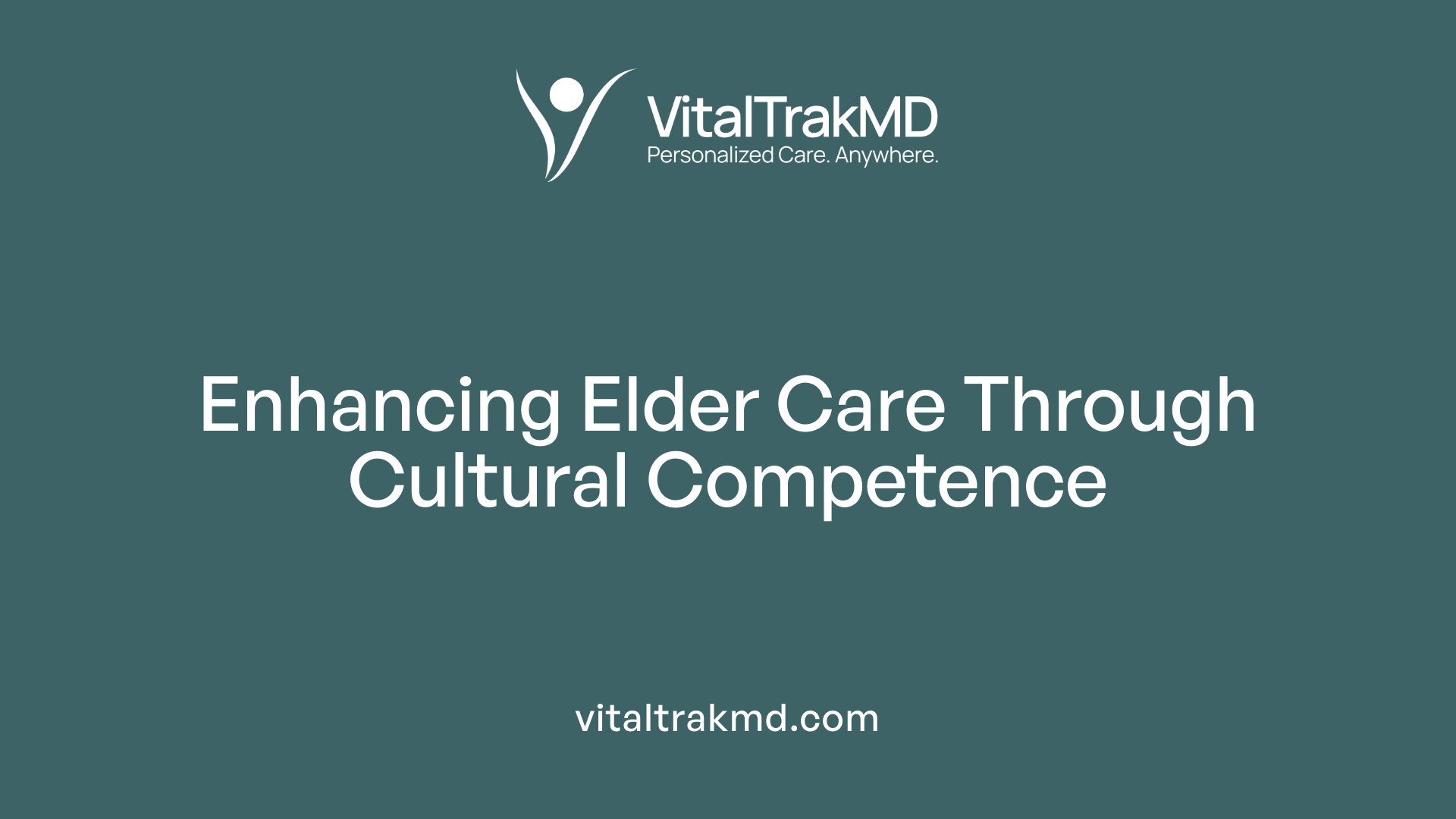
Why is cultural, linguistic, and social responsiveness important in elder care?
Older adults come from diverse cultural, linguistic, and social backgrounds. Providing care that is sensitive to these differences is essential for establishing trust and effective communication. When healthcare providers understand and respect cultural norms, language preferences, and social contexts, they create a welcoming environment that encourages older adults to seek and adhere to medical advice. This responsiveness helps address unique needs related to beliefs about health, traditional healing practices, and communication styles.
How can interpreter services and cultural humility training improve care?
Interpreter services are crucial for bridging language gaps, ensuring older adults fully understand their diagnosis, treatment options, and medication instructions. Additionally, training healthcare providers in cultural humility fosters an attitude of lifelong learning and openness to understanding patients' backgrounds. Such training encourages providers to recognize their own biases, listen actively, and adapt their communication accordingly, which enhances both understanding and trust.
What role does cultural competence play in reducing disparities?
Cultural competence helps to reduce health disparities faced by minority and underserved populations. When providers are equipped with the knowledge and skills to deliver culturally sensitive care, they can better address barriers related to language, health beliefs, and social determinants. This, in turn, improves access, adherence to treatment, and health outcomes for older adults from marginalized communities.
How does cultural competence enhance trust and communication?
Trust is foundational to effective healthcare. Cultural competence promotes respectful, empathetic interactions that validate patients' identities and experiences. Through clear, respectful communication tailored to cultural and linguistic preferences, older adults feel valued and understood. Strong trust encourages open dialogue, facilitates shared decision-making, and leads to higher satisfaction with care.
What does patient-centered, respectful care involve for older adults?
Patient-centered care involves respecting older adults' values, preferences, and social contexts. It means actively involving them and their families in healthcare decisions, providing understandable information, and respecting their cultural and personal dignity. Such care acknowledges the individuality of each older adult and strives to deliver equitable, meaningful, and respectful healthcare experiences.
| Aspect | Details | Impact |
|---|---|---|
| Cultural, linguistic, social responsiveness | Tailoring communication and services to meet diverse cultural and language needs | Builds rapport and improves comprehension |
| Interpreter services | Facilitates accurate communication for non-English speakers | Reduces misunderstandings and medical errors |
| Cultural humility training | Educates providers to recognize biases and adapt care | Promotes respectful, trustful relationships |
| Disparity reduction | Addressing barriers faced by marginalized groups to ensure equitable access | Decreases health disparities and improves outcomes |
| Trust and communication | Creating respectful dialogues that validate patient backgrounds | Increases patient engagement and adherence |
| Patient-centered care | Incorporating patient preferences and social contexts into care decisions | Enhances satisfaction and treatment effectiveness |
This comprehensive approach to cultural competence supports higher satisfaction levels among older adults by ensuring that care is not only effective but also respectful, understanding, and tailored to their personal and cultural needs. When older adults feel heard, valued, and understood, they are more likely to trust healthcare providers and follow through with medical advice, leading to better health outcomes and a more equitable healthcare system.
Environmental and Social Factors Impacting Healthcare Engagement
How do environmental and social factors influence healthcare engagement among older adults?
Environmental and social determinants significantly shape older adults' ability to access and utilize healthcare services. On the positive side, neighborhood features such as proximity to clinics, accessible transportation options, and well-maintained community infrastructure facilitate easier access to healthcare providers. These environmental facilitators reduce physical and logistical barriers, encouraging regular health check-ups, adherence to treatments, and social participation.
However, numerous challenges exist. Social isolation remains a prominent barrier, especially in rural or urban settings where older adults may live alone with limited social networks. Feelings of loneliness and a lack of social support can diminish motivation to seek care, adhere to medical advice, or attend preventive services.
Safety concerns in neighborhoods, such as high crime rates or hazardous walking terrains, further discourage outdoor activity and clinic visits. Additionally, the digital divide—where limited internet access and low digital literacy prevail—hampers engagement with telehealth solutions and online health information, crucial for contemporary healthcare navigation.
Socioeconomic factors also exert strong influence. Older adults with lower income or educational levels often experience reduced health literacy, affecting their understanding of available services and their importance. Cultural norms and language barriers can prevent effective communication with healthcare providers, leading to mistrust or misinterpretation of medical advice.
Strategies to address these challenges involve developing community infrastructure that is age-friendly, such as safe pedestrian pathways, transportation services tailored for seniors, and mobile clinics. Policies and programs that offer tailored interventions—like culturally competent care, language support, and digital literacy training—can further promote engagement.
In sum, improving healthcare engagement among older adults requires a comprehensive approach that considers the interplay of physical environment, social networks, socioeconomic status, and cultural context. Strengthening community support, enhancing physical and digital accessibility, and fostering inclusive environments are vital to supporting the health and well-being of this growing population.
Reasons for Healthcare Avoidance in the Elderly Population
What are the common reasons older adults may avoid seeking medical care?
Older adults often hesitate to access healthcare services due to a mix of psychological, physical, socioeconomic, and cultural factors. One major psychological barrier is their perception of symptoms. Many believe that minor or vague symptoms will improve on their own, leading to delayed or avoided medical visits. This self-care approach is sometimes driven by a sense of independence, a desire to avoid the inconvenience of appointments, or a belief that healthcare services are unnecessary unless symptoms become severe.
Fear also plays a significant role. Older adults may worry about losing their independence or becoming a burden to family or caregivers. Concerns about being perceived as frail or weak can discourage seeking help. Additionally, past negative experiences with healthcare providers, such as feeling rushed or misunderstood, foster mistrust and reluctance to return.
Cost remains a persistent barrier. High out-of-pocket expenses for medications, tests, and treatments, coupled with insurance limitations and the expensive nature of long-term care, discourage some from engaging with healthcare services. Transportation issues, especially in rural areas, exacerbate this problem, making it physically difficult to reach clinics or hospitals.
Socioeconomic status influences care avoidance as well. Limited income, lack of insurance or underinsurance, and increased age (over 85) are associated with lower perceived accessibility and affordability of services.
Cultural and emotional factors further contribute to avoidance behaviors. Older adults might feel uncomfortable discussing health issues or fear stigma related to certain conditions. Emotional aspects, including embarrassment and fear of diagnosis or treatment, can prevent patients from seeking necessary care.
Long wait times and inconvenience are additional deterrents. Many older adults find the process of scheduling and attending appointments burdensome, especially when they face mobility limitations or lack reliable transportation.
Finally, social and cultural beliefs influence perceptions of illness and healthcare: some may prefer traditional remedies or believe that seeking formal medical care is a sign of weakness. Others worry about privacy or potential discrimination based on age, race, or health status.
Understanding these multifaceted reasons is essential for designing interventions that encourage older adults to seek timely healthcare, ultimately improving health outcomes and quality of life.
Innovations and Future Perspectives in Elder Healthcare

What innovative approaches are shaping the future of elder healthcare?
The landscape of elder care is rapidly evolving, driven by a range of innovative strategies designed to enhance accessibility, quality, and person-centeredness. Among these, hospital-at-home programs stand out as a groundbreaking approach, allowing older adults to receive hospital-level care in the comfort of their own homes. Such programs reduce the risks associated with hospital stays, like infections and delirium, while maintaining a familiar and supportive environment.
Integrated housing-healthcare models are also gaining prominence. These models combine living arrangements, such as assisted living or co-housing communities, with embedded healthcare services. This integration fosters social engagement and continuous health monitoring, helping seniors age in place while receiving personalized care tailored to their needs.
Remote monitoring and telehealth technologies have become critical in transforming elder care. Wearable devices, remote blood pressure monitors, and video consultations enable healthcare providers to track health metrics in real-time and intervene early, reducing emergency visits and hospitalizations. Telehealth also expands access for rural and homebound seniors, overcoming geographical barriers.
Community-based intervention programs play a vital role in addressing systemic gaps, especially for underserved rural populations. These programs include mobile clinics, community health workers, and partnerships with local organizations, ensuring that essential health services, social support, and mental health care are accessible and culturally appropriate.
Policy reforms and increased funding are integral to sustaining and expanding these innovative solutions. Changes such as flexible reimbursement models, support for workforce development, and regulatory adjustments facilitate the deployment of advanced care models and aid scalability.
Technological advancements aimed at aging in place include smart home systems and AI-driven health management tools. These innovations assist older adults in maintaining independence by detecting hazards like falls, managing medication schedules, and providing emergency alerts. Together, these approaches foster a holistic environment where aging in place becomes a viable and preferred choice.
By combining in-home care programs, integrated community services, technological tools, and supportive policies, the future of elder healthcare is moving toward a more accessible, efficient, and personalized system. These innovations aim not only to enhance health outcomes but also to improve quality of life, respect individual preferences, and enable older adults to live with dignity and autonomy.
Redefining Elder Care: Toward a Patient-Centered, Equitable Future
The challenges facing traditional clinics in caring for older adults reveal critical gaps in accessibility, coordination, and quality. By embracing innovative approaches such as community-based care, telehealth, integrated social supports, and culturally competent services, healthcare systems can better meet the diverse and complex needs of aging populations. Addressing systemic barriers—financial, environmental, social, and cultural—requires a concerted effort in policy reform, workforce training, and infrastructure development. Moving beyond the limitations of conventional models, a holistic, person-centered paradigm that values aging in place, promotes equity, and enhances quality of life is essential. Such transformation will ensure that healthcare systems are truly equipped to serve older adults effectively, compassionately, and sustainably in the years to come.
References
- Why do older people not use the public health services of the ...
- Understanding Unmet Care Needs of Rural Older Adults with ...
- Older adults embrace non-traditional medical care sites, poll finds
- Older adults embrace non-traditional medical care, poll finds
- Helping Older Adults Age Well in Rural America
- Tip Sheet: What Older Adults Need to Know about Retail Clinics
- Healthcare Access in Rural Communities Overview
- [PDF] Meeting the Growing Demand for Age-Friendly Care
- “They don't care about us”: older people's experiences of primary ...
- Challenges to meeting the HIV care needs of older adults in the rural ...
Recent articles
Want to Feel Better and Live Healthier?
Join hundreds of patients taking control of their health with personalized care that fits their life – not the other way around.
Rated 4.8/5 by 32+ customers







